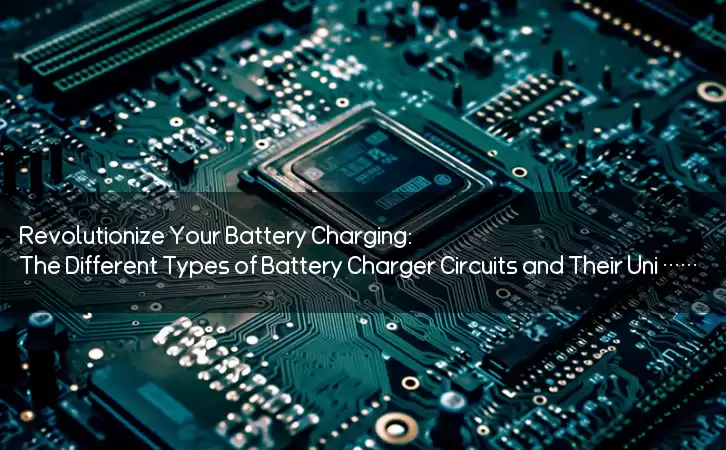Information Center
Revolutionize Your Battery Charging: The Different Types of Battery Charger Circuits and Their Unique Advantages
Published:2023-09-04 20:33:41 Author:Green WCND Views:88A battery charger circuit is an electronic circuit that is designed to charge rechargeable batteries. There are several types of battery charger circuits available in the market, and each type has its own unique features and advantages.

A typical battery charger circuit consists of a transformer, a rectifier, and a voltage regulator. The transformer is used to convert the high voltage AC power from the mains to the required low voltage DC power that is required for charging the battery. The rectifier circuit is used to convert the AC power to DC power, and the voltage regulator circuit is used to regulate the voltage to the required level for charging the battery.

There are several different types of battery charger circuits available, including the linear charger, the switching charger, and the pulse charger. Linear chargers are the most commonly used type of charger, and they are used in a wide range of applications, including mobile phones, laptops, and digital cameras.
Switching chargers are another popular type of charger circuit, and they are mostly used in high-end equipment that requires a high charging current. These chargers are more efficient and faster than linear chargers, but they are also more expensive.
Pulse chargers are a relatively new type of charger circuit, and they are designed to charge batteries much faster than linear or switching chargers. These chargers use a series of pulses to charge the battery, which can lead to longer battery life and faster charging times.
The design of a battery charger circuit will depend on the type of battery that is being charged. For example, a lead-acid battery charger circuit will be different from a lithium-ion battery charger circuit, as lead-acid batteries require a constant-current charging method, while lithium-ion batteries require a constant-voltage charging method.
One of the most important factors to consider when designing a battery charger circuit is the safety of the circuit. Charging a battery can be dangerous, and it is important to ensure that the circuit is designed to prevent overcharging, overheating, and other potential hazards.
In conclusion, a battery charger circuit is an essential component in any rechargeable electronic device. There are several different types of charger circuits available, each with its own unique features and advantages. The design of a battery charger circuit will depend on the type of battery that is being charged, and it is important to ensure that the circuit is designed to be safe and efficient.
Power Adapter Design and Customization Guide for Portable Electric KettlesI. Common Design Types for Portable Electric Kettle Power AdaptersPortable electric ke···
I. Common Design Types of Power Adapters External Independent Type (Most Common) Design: A standalone adapter (e.g., "black brick") connected to the p···
Handheld Vacuum Cleaner Power Adapter Selection GuideIntroductionHandheld vacuum cleaners have become a mainstream tool for household cleaning due to their port···
Drill Power Adapter Selection Guide.drill-container { font-family: Arial, sans-serif; line-height: 1.6; max-width: 800px; margin: 0 auto; padding: 20px; } .dril···





